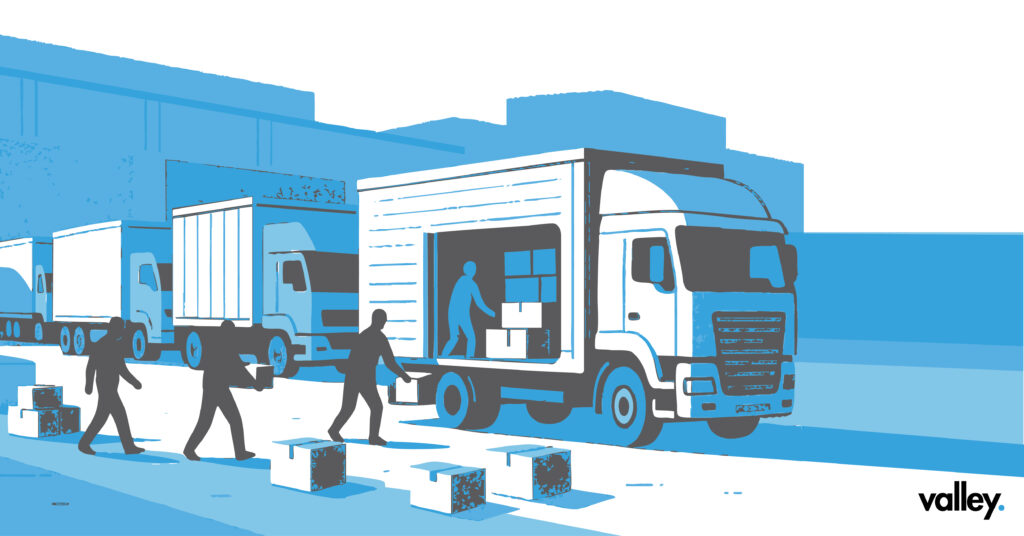Stolen Goods in Trucking: How Criminals Use Fleets to Distribute Stolen Cargo

Trucking is the backbone of global supply chains. Trucks move goods between homes, stores, factories, and warehouses every day. Without them, shelves would empty and businesses would stall. But criminals exploit this same system. One growing problem is the use of legitimate and fake trucking fleets to move stolen goods. From clothing and electronics to alcohol and fuel, traffickers hide stolen goods inside normal shipments. This article explains real cases, shows how stolen goods distribution networks work, and gives carriers steps to protect themselves.
Quick Answer
Stolen goods in trucking are moved through fake carriers, forged documents, load hijacking, and broker exploitation. Thieves exploit the high volume and complexity of logistics to mix stolen cargo with legitimate shipments. Fleets can reduce risks by verifying carriers and drivers, investing in cargo security, training employees, and working closely with law enforcement.
Why Trucks Are Used for Stolen Goods
Criminals prefer trucks to move stolen goods because they offer capacity, cover, and access. Here are the main reasons:
- Capacity: A single truck can move thousands of pounds of stolen goods at once, making it efficient for traffickers.
- Legitimacy: It is normal to see trucks hauling big shipments, so a stolen load can blend in with real cargo and avoid suspicion.
- Mobility: Trucks can cross states and borders fast, moving stolen items to illegal markets before they are discovered.
- Complex supply chains: With many brokers and subcontractors, it is hard to track every shipment. Criminals use this to sneak stolen goods into the system.
U.S. Cargo Theft and Trucking Fleets
Cargo theft is a major issue in the U.S. The FBI estimates businesses lose $15–30 billion every year (Trucking Dive). CargoNet recorded over 3,600 theft incidents in 2024, the highest in more than a decade. In many cases, criminals used trucks to move stolen goods. (Transport Topics).
Example: In California, thieves posed as legitimate trucking operators with fake paperwork. They picked up loads of electronics, moved them across states, and sold them on the black market. The criminals exploited trust in trucking paperwork and the speed of distribution.
European Organized Theft Rings
Cargo theft is also a global problem. In 2021, Europol disrupted a network in Spain and Portugal. The group used trucks with forged documents and sometimes hijacked loads from warehouses. They trafficked stolen electronics and fuel worth millions of euros. This shows how international networks exploit trucking fleets, sometimes without carriers realizing it.
How Stolen Goods Move Through Trucking
Criminal networks use several strategies to disguise stolen cargo:
- Fake carriers: Fraudsters set up trucking companies with clean paperwork that look real but exist only to move stolen loads.
- Document fraud: Thieves use forged shipping documents to label stolen goods as regular cargo such as furniture or electronics.
- Load hijacking: Criminals steal a legitimate shipment and move it using their own fleet to illegal buyers.
- Broker exploitation: By winning contracts through freight brokers, traffickers insert stolen cargo into legitimate supply chains.
- Mixing shipments: Stolen goods are hidden inside normal shipments, such as stolen alcohol mixed in with real beverage deliveries.
The Scale of the Problem
Stolen goods distribution harms both businesses and consumers:
- Monetary loss: Businesses lose billions annually, and costs are often passed to consumers through higher prices.
- Supply chain disruption: A single stolen load can delay retailers and leave shelves empty.
- Funding crime: Profits from stolen goods often fuel organized crime and other illegal activities.
- Reputational harm: Even victims of theft may lose contracts if linked to stolen cargo.
The Consequences for Trucking Companies
Fleets connected to stolen goods face serious consequences, even if unaware:
- Truck and cargo loss: Trucks may be seized during investigations, causing financial damage.
- Legal exposure: Fleets may face lawsuits or fines if negligence is shown.
- Loss of contracts: Shippers may cut ties with carriers linked to stolen shipments.
- Reputation damage: Trust is hard to rebuild once a company is linked to cargo theft.
Lessons from Enforcement
Authorities worldwide have disrupted stolen goods networks:
- Miami, 2022: Police discovered a warehouse with over $10 million in stolen cargo, much of it delivered by trucks. Fake carriers were used to collect and deliver loads.
- UK, 2018: Police dismantled a gang that stole millions in goods from parked trucks. They used their own trucks to transport the stolen cargo to buyers.
What the Industry Can Do
Carriers can reduce risks with these steps:
- Strengthen verification: Check driver IDs, licenses, and references carefully. Confirm contracts directly with shippers. Be cautious of subcontractors offering unusually low rates.
- Improve cargo security: Use GPS tracking, electronic seals, and frequent driver check-ins to spot theft early.
- Train employees: Teach staff and drivers how thieves operate, including fake paperwork or unusual pickups. Collaborate with authorities: Join networks like CargoNet, report thefts quickly, and share intelligence with law enforcement.
FAQs on Stolen Goods in Trucking
How big is the stolen goods problem in trucking?
- The FBI estimates cargo theft costs U.S. companies $15–30 billion every year, with thousands of theft cases reported annually.
What kinds of goods are most often stolen?
- High-value, easy-to-sell goods like electronics, alcohol, fuel, and designer clothing are common targets.
How do criminals disguise stolen cargo?
- They use fake paperwork, false carriers, and mix stolen goods with legitimate shipments to avoid suspicion.
Can trucking companies be punished even if they didn’t know?
- Yes. Fleets can face lawsuits, fines, or reputational harm even if they were not aware cargo was stolen.
What steps protect fleets the most?
- Carrier and driver verification, GPS tracking, employee training, and quick reporting to authorities are key defenses.
Final Thoughts
Criminals exploit trucking fleets to move stolen goods because they are fast, mobile, and trusted. Real-world cases from the U.S. and Europe show how traffickers use fake paperwork, fake carriers, and hijacking to hide theft inside normal supply chains. For fleets, the risks are high legal issues, financial loss, and reputational damage. By verifying carriers and drivers, investing in security, training employees, and working with law enforcement, carriers can protect themselves and reduce the reach of stolen goods networks.
